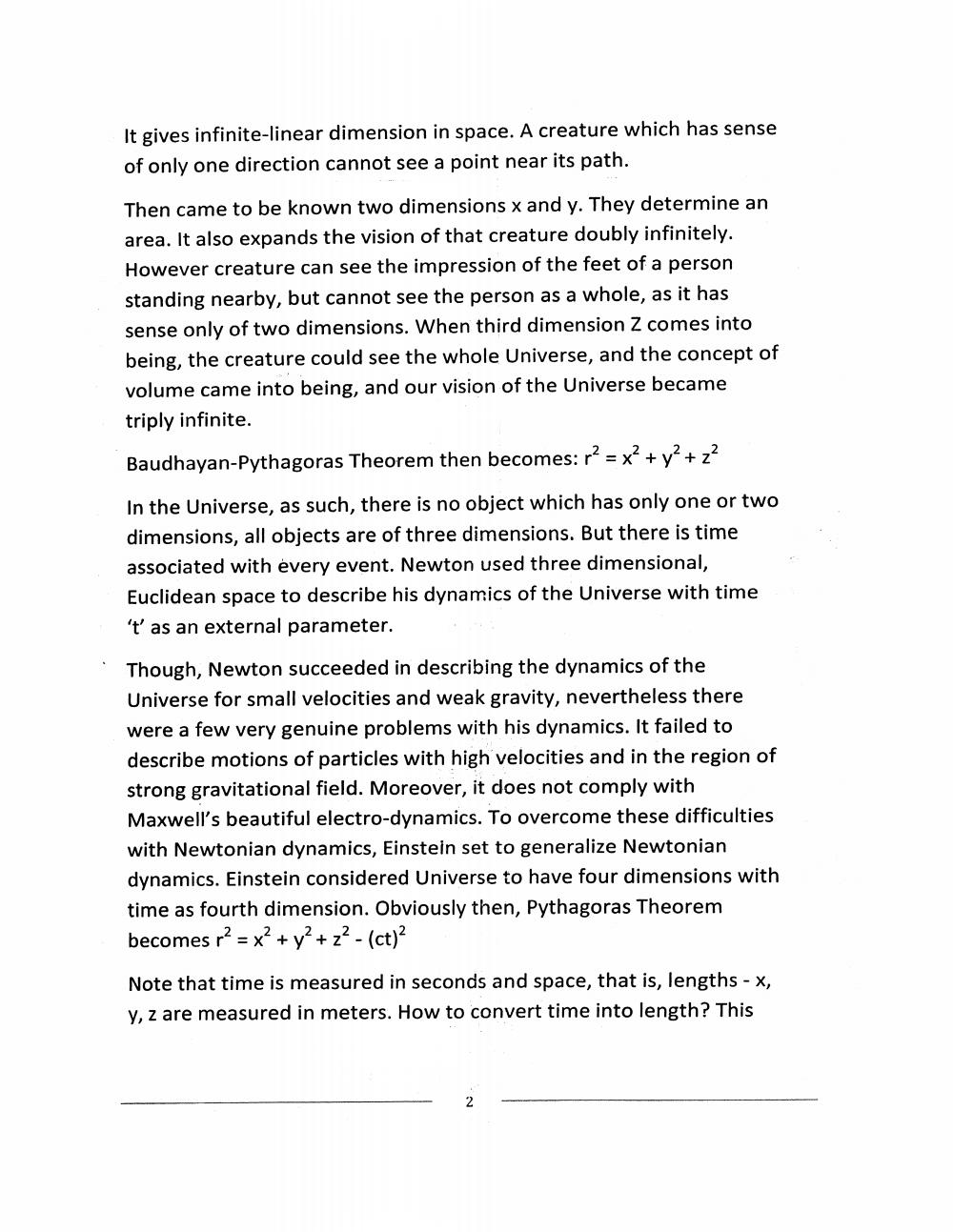Book Title: Nature of Universe Author(s): J J Rawal Publisher: J J Rawal View full book textPage 2
________________ It gives infinite-linear dimension in space. A creature which has sense of only one direction cannot see a point near its path. Then came to be known two dimensions x and y. They determine an area. It also expands the vision of that creature doubly infinitely. However creature can see the impression of the feet of a person standing nearby, but cannot see the person as a whole, as it has sense only of two dimensions. When third dimension Z comes into being, the creature could see the whole Universe, and the concept of volume came into being, and our vision of the Universe became triply infinite. Baudhayan-Pythagoras Theorem then becomes: r2 = x2 + y2 + 2? In the Universe, as such, there is no object which has only one or two dimensions, all objects are of three dimensions. But there is time associated with every event. Newton used three dimensional, Euclidean space to describe his dynamics of the Universe with time 't' as an external parameter. Though, Newton succeeded in describing the dynamics of the Universe for small velocities and weak gravity, nevertheless there were a few very genuine problems with his dynamics. It failed to describe motions of particles with high velocities and in the region of strong gravitational field. Moreover, it does not comply with Maxwell's beautiful electro-dynamics. To overcome these difficulties with Newtonian dynamics, Einstein set to generalize Newtonian dynamics. Einstein considered Universe to have four dimensions with time as fourth dimension. Obviously then, Pythagoras Theorem becomes r2 = x2 + y2 + 2? - (ct)? Note that time is measured in seconds and space, that is, lengths - X, y, z are measured in meters. How to convert time into length? This - 2 -Page Navigation
1 2 3 4 5 6 7 8 9 10 11 12
